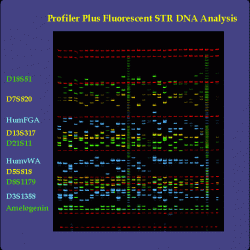Many talented sprinters run like gazelles, their feet barely kissing the track as they glide along. But not all great runners move like this. One of the most successful athletes of all time was a muscular runner named Emil Zatopek, nicknamed ‘The Czech Locomotive’ for his powerful, but not particularly graceful, running. Zatopek won five Olympic medals, four of them gold, and in 1952 he became the first, and so far only, runner to win the 5,000- and 10,000-meter races, and the marathon, at one Olympic Games (it was his first competitive marathon at that).

Zatopek’s training methods were brutal, as he sought to develop his power and his ability to ignore discomfort and pain. He was not concerned about his lack of style: he said he’d aim for a more classical form when they started awarding points for it. He subjected his body to a variety of training regimens, churning out incredible weekly distances at various speeds. One novel aspect was his adoption of an interval training method that had been used at least as early as 1902, but which had dwindled in popularity by World War II. It involved running fast, short, distances, followed by jogging for a brief period to recover, repeating the cycle numerous times.
Zatopek didn’t have natural speed, even the kind required for his longer races, and he began using the interval method because he wanted to go faster. This method is called ‘Sprint Interval Training’, or SIT, and it is a model for the currently voguish training method called ‘High Intensity Interval Training’, or HIIT. HIIT is a broader version of SIT, since it can be performed using running, cycling, or working out on stationary equipment such as rowing machines and elliptical trainers.
Me and Emil
During ancient times (my youth), I decided to train for track, in particular, the sprints (100 to 400 meters). I wasn’t a particularly talented runner, but I thought that by training I could probably run faster than my high school mates, who mostly didn’t train at all. We lived in a small town, and there was only one person involved in coaching school athletics. He was also a full-time teacher and coach of the basketball team, so didn’t have much time to coach my track interest.
It occurred to me that there might be some useful training methods out there, and I came across Emil Zatopek. (This was the late ’50s, when he had already won most of his great victories.) Emil’s training methods were widely known because he was a generous sharer. The one that caught my eye was his interval training approach. I started to run moderately fast 200-meter intervals interspersed with slow recoveries, repeated several (usually 5 or 6) times in sequence. It worked: by the time of the regional track meets in the Spring of 1959, nobody within a hundred miles could come close to me in the 200- or 400-meter sprints (our distances were measured in Imperial units, and the 200 meter equivalent was the 220 yard sprint, which is actually 201.2 meters).
Forty-five years later, I wasn’t running sprints, but I was concerned about fitness, and became a regular at my local YMCA. I was aware of the renewed interest in HIIT, and decided to again give it a try for getting more fit in late (OK: at the end of) middle age. The elliptical trainer and the rowing machine offered a safe and flexible venue for it, and so began my revived affair with HIIT.
In addition to being a time-efficient fitness tool (more on that later), HIIT is also less boring than drawn-out, constant-effort training. Researchers studying HIIT in older, unfit, adults saw members of a control group engaging in constant-effort (read slow and boring) fitness training plead to shift to the HIIT group. That group seemed to be enjoying their workout more, and got to go home a lot sooner.
There are also people who question the value of HIIT: see, for example this study. I’ve looked at some of those criticisms, and my opinion about HIIT as a valuable training method is unchanged. In the study quoted above, for example, the criticism is largely that studies on HIIT don’t have enough participants to be statistically strong.
What is HIIT?
‘High intensity interval training’ is usually defined as cycles of high intensity physical activity followed by recovery periods. (Warming up before the first cycle is always advised.) The high intensity part should be strenuous enough to produce a heart rate of 80 or 90% of the maximum. So, before beginning HIIT, it’s a good idea to have an idea of what that maximum heart rate is. A rule of thumb is to subtract age from 220, by which rule a typical 50-year-old would have a nominal maximum rate of 170 beats per minute.
The high intensity part of the HIIT cycle usually lasts anywhere from 10 seconds to a minute, and the recovery phase anywhere up to several minutes. Recovery involves a low-level activity which can be handled easily as the heart returns to a more normal rate (not to the resting rate — that takes longer). Then the high/low intensity cycle is repeated, typically 4 to 6 times in total.
A couple of informative articles about HIIT, in non-specialist form, are available at Healthline and Vox.
What happens to energy metabolism during high intensity muscle work?
Any time the body is involved in physical activity, many parts of it have to work harder, including the heart, lungs, and other organs, as well as the muscles directly involved in the activity itself (a previous post describes the energy changes between the body at rest and at work).
The skeletal muscles involved in HIIT are called ‘voluntary’ because they are controlled by the brain; we think about running and then we do it. What’s astonishing about skeletal muscle is how much it can increase its power output in response to demand. During the intense phase of HIIT, the major muscles can increase their work output by 50-fold compared to being at rest. This big increase in work requires a concomitant increase in ‘fuel’ consumption. This fuel is carbohydrate, in particular, glucose.
Skeletal muscle makes up about 35% of the body mass of an adult. It consumes around 13 Calories of food energy per kilogram, per day, at rest. An 80 kg (176 pound) male, reasonably fit and between 20 and 40 years old, might have 28 kg of skeletal muscle. So at rest his skeletal muscles would consume about 365 Calories of energy a day, or around 14% of his total.
During the intense phase of HIIT, the skeletal muscles may consume over 1,000 Calories worth of fuel (glucose) per hour; but that phase may only last 30 seconds, so the fuel consumption is about 8 Calories (2 grams of glucose). This is a very small portion of the glucose available in the muscle cells, so many rounds of high intensity work could be carried out without depleting the glucose supply. Stated another way: it’s not the lack of fuel that limits high intensity exertion.
A closer look at metabolism during HIIT
The high-intensity part of HIIT is fueled almost entirely by oxygen-independent (hence ‘anaerobic’) energy metabolism. Several closely-connected components of energy metabolism contribute. The most immediate source of muscle energy is the ‘universal energy currency’ molecule, adenosine triphosphate, ATP. ATP directly drives the contraction and relaxation of skeletal muscle fibers. As the ATP is used, it is quickly replenished by the high energy metabolite creatine phosphate (there’s more about creatine and creatine phosphate in another post).
But there’s only enough ATP and creatine phosphate in a muscle cell to power an intense activity for 10 or 20 seconds. Almost at the instant that the high work rate starts, another source of energy kicks in to restore ATP and creatine phosphate and to allow high power work to continue for longer. This source of energy is glycolysis. Glycolysis is a metabolic pathway, a sequence of enzymatic steps, that converts glucose to lactate in anaerobic energy metabolism. (Lactate produced in glycolysis during anaerobic work is often referred to as lactic acid, but strictly speaking it’s lactate, the salt of lactic acid, that’s the product of anaerobic glycolysis).
In the presence of oxygen, the lactate produced by glycolysis is whisked away and used as an energy source. But under anaerobic conditions, such as during the high intensity phase of HIIT, acid is produced, along with lactate. The source of this acid is not actually lactic acid, or lactate, although that’s what most people think; it’s complicated, and not necessary to understand where it comes from. It’s enough to know that there’s a production of acid during anaerobic glycolysis. This will turn out to be an important signal in limiting muscle contractions during HIIT.
The immediate source of glucose for glycolysis during the high intensity phase of HIIT is not blood glucose, which enters muscle cells too slowly to do the job, but rather a starchy polymer of glucose called glycogen that is stored inside the muscle cells. (Blood glucose is, however, involved in restoring glycogen during the recovery phase). There’s quite a lot of glycogen in a fit and well-rested skeletal muscle cell, enough to drive high power output for an hour or more, depending on a person’s fitness.
What controls the rate of glycolysis during HIIT?
What turns on glycolysis during HIIT? The complex metabolic system that is glycolysis provides at least one answer, although there may be more to it — after more than 100 years of study, energy metabolism is still providing new answers and insights. We know that at least part of the answer is that the utilization of ATP provides the ignition for glycolysis. Although the muscle cell’s metabolism is organized so that ATP levels never fall drastically, even a small decrease in ATP during muscle contraction leads to a much larger percentage increase in its breakdown product, adenosine monophosphate (AMP). And AMP is a powerful regulator of glycolysis, causing it to increase rapidly to meet the (small) loss of ATP. (The enzyme that is stimulated by AMP is the enzyme phosphofructokinase-1, which is a rate-limiting step in glycolysis).
Experience will tell you that you can only maintain the high intensity phase of HIIT, going at 80 or 90% of your maximum heart rate, for a few dozen seconds. Why is that, when there’s plenty of fuel (glycogen) available? During this time, you will begin to breath harder, which seems a bit odd, since glycolysis is anaerobic. It’s not the oxygen being sucked into your lungs that’s important at that point; it’s your body blowing off carbon dioxide to get rid of the acid produced by rapid, anaerobic, glycolysis. This happens automatically when the acidity of the blood increases.
Although the body will blow off some acid as CO2, it will not be able to keep up, and the acidity of the muscle itself begins to increase (another way to say this is that there’s a drop in pH). And that will bring the high rate of muscle contraction during the high intensity phase to a close. Why?
An important reason for the limitation of muscle contraction is that the very proteins that produce contraction and relaxation of muscle, actin and myosin, lose their speed and strength of interaction as the pH drops (as acid increases, in other words) (1). It’s a safety feature, which ensures that ATP levels in the cell are not massively depleted, for one thing. The increase in acidity also slows down glycolysis because the same enzyme that is stimulated by AMP to increase the rate of glycolysis at the earlier stage is now increasingly inhibited by the acid environment. The high intensity phase comes to an end. Recovery over the next few minutes gets rid of the excess acidity through breathing out carbon dioxide, in preparation for a new cycle.
There’s also a longer-term response to HIIT training. Repeated engagement in HIIT leads to a rise in a protein factor (if you really want to know, it’s hypoxia-inducible factor -1alpha) which increases the genetic expression of many of the enzymes of glycolysis. So there’s the development of a higher fitness level, as the enzymatic machinery, the glycolysis pathway, for providing energy is increased.
What happens to your body during HIIT?
Research shows that HIIT increases bone strength, weight loss, the delivery of oxygen to tissue (VO2) and muscle power. It increases the lactate threshold, that is, how much lactate can be produced before acidity shuts down glycolysis. It leads to higher levels of stored muscle glycogen, and to an increase in the glycolytic enzymes. Researchers have found that high-intensity interval training produces a similar increase in markers for the production of mitochondria, the organelles that may improve the fat-burning power of cells. In short, all of the hallmarks of increased fitness.
HIIT doesn’t necessarily develop a higher level of all aspects of fitness than more conventional, constant-effort methods, but it has the advantages already mentioned: it takes only a fraction of the time, and most people find it more engaging to have the cyclic intense and recovery phases, as the heart races and then relaxes. Gives you something to measure, and makes it easier to detect increasing fitness.
At the level of cells and organs, HIIT has additional effects. It leads to significant improvements in heart output (stroke volume) and blood vessel characteristics, particularly in cardiac patients. It may increase VO2 to a greater extent than constant-exertion exercise. And for us mature folks, HIIT at least partially reverses one of the serious negative side effects of getting older: sarcopenia, that is, muscle wasting.
Go to Latest Posts
Reference
- Acidosis affects muscle contraction by slowing the rates myosin attaches to and detaches from actin. Jarvis, K., M. Woodward, E. P. Debold, and S. Walcott. J. Muscle Res. Cell Motil. August:39 (3-4), 135-147 (2018).




